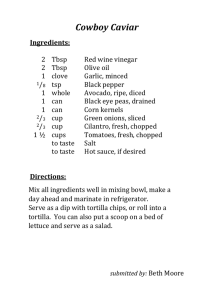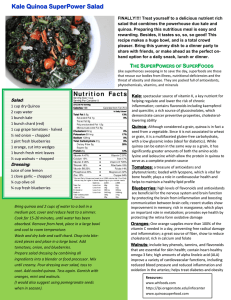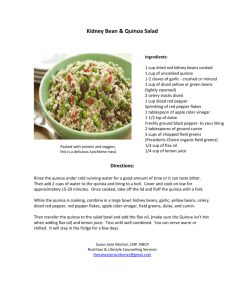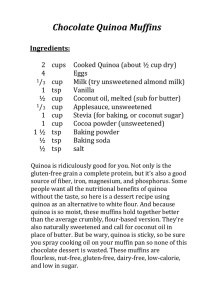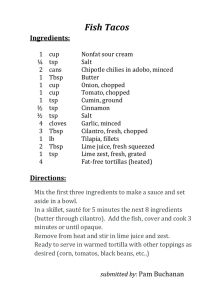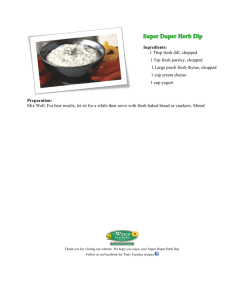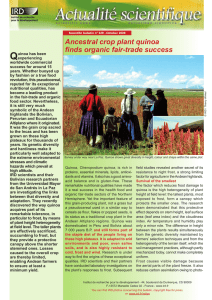Fiscal Cliff Deal: The Good and the Bad Donor Day February 2013
advertisement
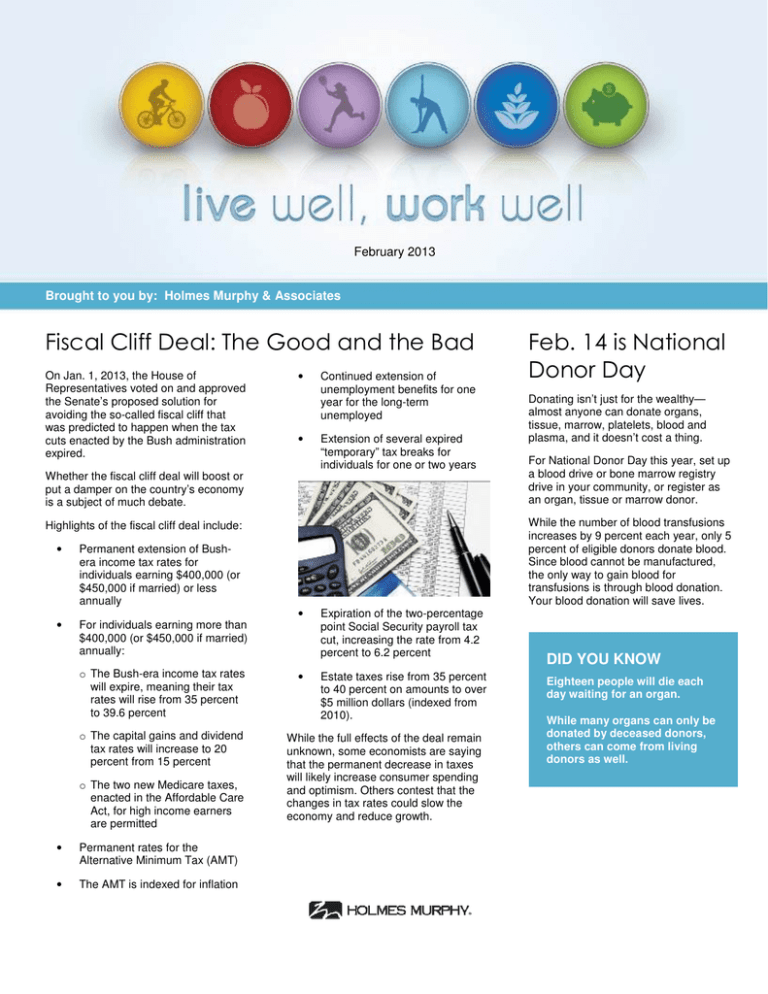
February 2013 Brought to you by: Holmes Murphy & Associates Fiscal Cliff Deal: The Good and the Bad On Jan. 1, 2013, the House of Representatives voted on and approved the Senate’s proposed solution for avoiding the so-called fiscal cliff that was predicted to happen when the tax cuts enacted by the Bush administration expired. • • Continued extension of unemployment benefits for one year for the long-term unemployed Extension of several expired “temporary” tax breaks for individuals for one or two years Whether the fiscal cliff deal will boost or put a damper on the country’s economy is a subject of much debate. Permanent extension of Bushera income tax rates for individuals earning $400,000 (or $450,000 if married) or less annually • For individuals earning more than $400,000 (or $450,000 if married) annually: o The Bush-era income tax rates will expire, meaning their tax rates will rise from 35 percent to 39.6 percent o The capital gains and dividend tax rates will increase to 20 percent from 15 percent o The two new Medicare taxes, enacted in the Affordable Care Act, for high income earners are permitted • Permanent rates for the Alternative Minimum Tax (AMT) • The AMT is indexed for inflation Donating isn’t just for the wealthy— almost anyone can donate organs, tissue, marrow, platelets, blood and plasma, and it doesn’t cost a thing. For National Donor Day this year, set up a blood drive or bone marrow registry drive in your community, or register as an organ, tissue or marrow donor. While the number of blood transfusions increases by 9 percent each year, only 5 percent of eligible donors donate blood. Since blood cannot be manufactured, the only way to gain blood for transfusions is through blood donation. Your blood donation will save lives. Highlights of the fiscal cliff deal include: • Feb. 14 is National Donor Day • Expiration of the two-percentage point Social Security payroll tax cut, increasing the rate from 4.2 percent to 6.2 percent • Estate taxes rise from 35 percent to 40 percent on amounts to over $5 million dollars (indexed from 2010). While the full effects of the deal remain unknown, some economists are saying that the permanent decrease in taxes will likely increase consumer spending and optimism. Others contest that the changes in tax rates could slow the economy and reduce growth. DID YOU KNOW Eighteen people will die each day waiting for an organ. While many organs can only be donated by deceased donors, others can come from living donors as well. Staying Hydrated in the Winter Months While staying hydrated is important year-round, it’s especially difficult in the winter months. Cold weather can make your skin dry and flaky, and can make drinking water seem like a chore. Follow these tips for staying hydrated this winter: • Make your water taste better - Try infusing it with fresh fruit (lemon slices, berries, cucumber slices, etc.) and keeping a full pitcher handy in the fridge. • Eat plenty of fruits and veggies - Apples are made up of about 84 percent water, while tomatoes are 94 percent water. • Mix up cold, hot and room temperature drinks - Try having a cup of hot tea in the morning, drinking ice water with meals and placing a water bottle next to your bed for middle-of-the-night cravings. • Take water with you - It is easy to stop at a soda machine when you’re out and about, but taking water bottles with you (in your purse, car, etc.) may help you avoid giving in to sugary drinks. Be Frugal – Do It Yourself Quinoa & Black Bean Salad There’s more to thrift than just shopping sales. If you save 50 cents on a bag of potatoes, but then spend $20 getting fast food because you don’t make time to cook, you’re not getting ahead. Increase your independence and save money in the long run. Learn how to do the following things: Quinoa is a grain that provides all nine essential amino acids, making it a complete protein. It is cholesterol- and gluten-free as well. This quinoa and black bean salad is a healthy lunch option. • Garden - Grow your own fruits and veggies. Go all-out and grow squash, potatoes, tomatoes and more, or start small by cultivating your own fresh herbs. • Cook and bake - Stop wasting your money on eating out. Plan your meals at the beginning of the week, get groceries and stick to your plan. Pick up a few cookbooks at the library—whether you’re looking for quick meals, healthy snacks or sumptuous desserts, there’s a cookbook to meet your needs. • Can and preserve - Buy produce in bulk when it’s in season or on sale, or grow your own. Can or preserve it for later in the year when produce costs skyrocket. • • Sew, knit or crochet - Hiring a seamstress for alterations can be expensive. Giving up on your favorite pair of jeans because the button falls off is just unnecessary, and even the simplest curtains can be costly. Sewing, knitting and crocheting are excellent ways to get exactly what you’re looking for without spending a lot of money. Household repairs - While some things are best left to professionals, others can be done by pretty much anyone—learn to unclog drains, re-caulk showers and fix squeaky doors and you’ll save yourself a big chunk of change. ½ c. dry quinoa 1 ½ c. water 1 ½ tbsp. olive oil 3 tbsp. lime juice ¼ tsp. cumin ¼ tsp. ground coriander 2 tbsp. cilantro, chopped 2 medium scallions, minced 1 can (15 oz.) black beans, rinsed and drained 2 c. tomato, chopped 2 medium bell peppers (1 red, 1 green), chopped 2 fresh green chilis (or to taste), minced Black pepper (to taste) Rinse quinoa in cold water. Boil water in saucepan, add quinoa. Return to boil. Simmer until water is absorbed, 10 to 15 minutes. Cool 15 minutes. Meanwhile, mix olive oil, lime juice, cumin, coriander, chopped cilantro and scallions in small bowl. Set aside. Combine chopped vegetables with black beans in large bowl. Set aside. Once quinoa has cooled, combine all ingredients and mix well. Cover and refrigerate until serving. Yield: 6 servings. Each serving provides 208 calories, 5g total fat, 1g saturated fat, 0mg cholesterol, 284mg sodium, 7g total fiber, 9g protein, 34g carbohydrates and 619mg potassium. Source: www.nhlbi.nih.gov This brochure is for informational purposes only and is not intended as medical advice. For further information, please consult a medical professional. © 2013 Zywave, Inc. All rights reserved.
